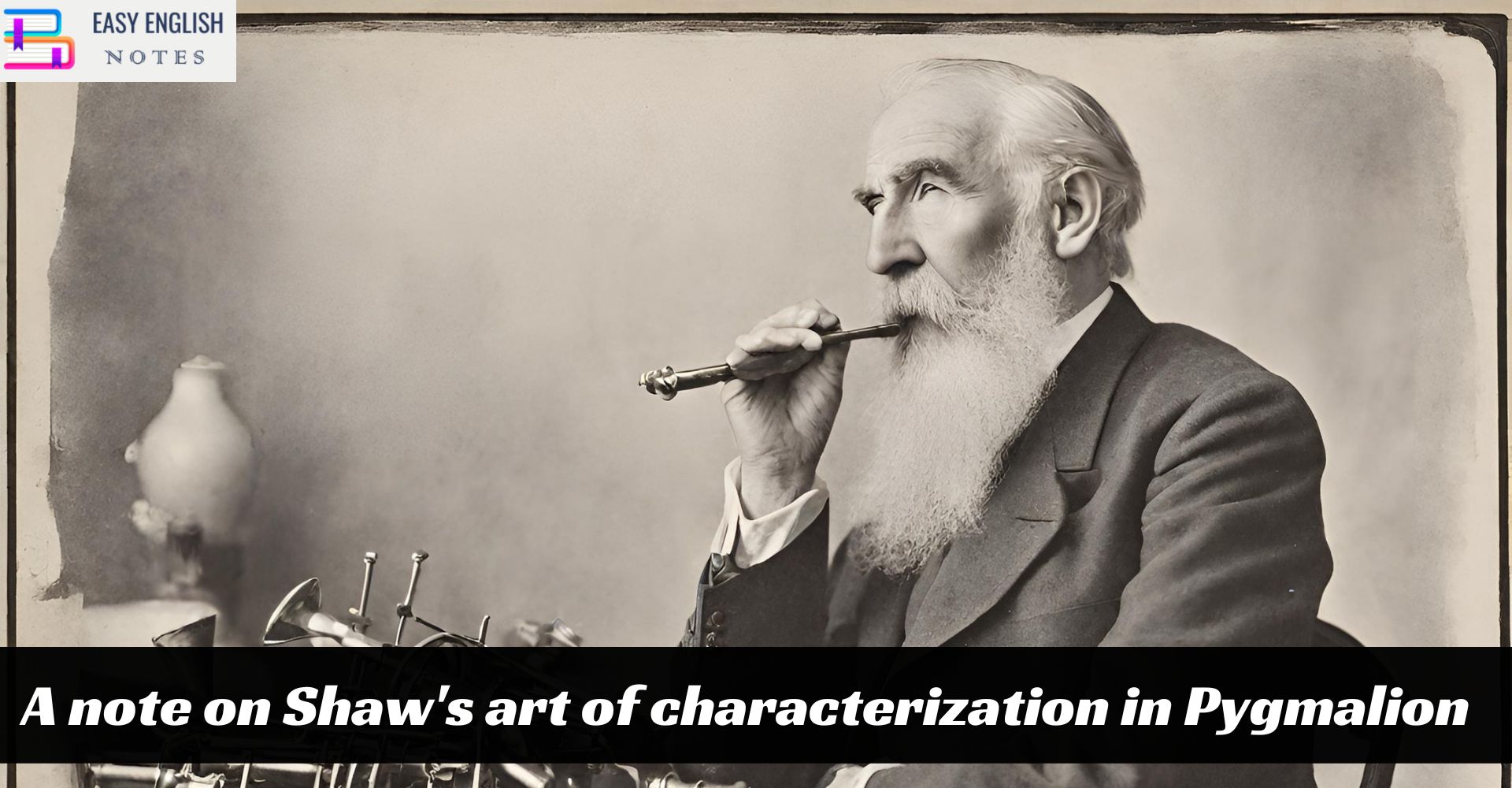At the time when Shaw came to the English stage. English drama was slowly struggling to rise from the toper into which it had fallen during the Victorian Age. Poetical drama had proved to be a failure and the dramatists were looking for something real and alive, Pinheiro, Arthur Jones and other being trying to bring realism back to the English stage. I had been made a sensation with his new outlook and dramatic technique. The problem play was slowly emerging. But much had yet to be done. The stage was still shackled with old traditions and prudery.
It was during this transitional period of the English drama that Shaw burst upon the scene almost with a clap of thunder. The theatre was experiencing unusual rebirth. Shaw hastened this process with a Caesarian operation. The very first play of Shaw showed that the drama of ideas had come into life, and its future existence was assured. Shaw frequently sacrifices art for the sake of his reformist zeal. His plays, therefore, should not be judged on the score of pure art. And it is also true that the moralist and the satirist in him often overpowers and eclipses the artist. Shaw is unable to give real life to his characters. His characters are usually the mouthier of his views and therefore, they sail to appeal as creatures of flesh and blood. The readers cannot sympathise with them or identify with them. For instance, in The Ten of Destiny, Shaw has painted a rather distorted picture of the great Napoleon who with all his faults was not such a despicable creature as we find in him in this play. The only answer is that it is Shaw’s version of the French Emperor.
Also Read :
- Compare Hamlet with Macbeth, Othello and other Tragedies
- “The Pardoner’s Tale” is the finest tale of Chaucer
- Prologue to Canterbury Tales – (Short Ques & Ans)
- Confessional Poetry – Definition & meaning
- Line By Line Explanation Of The Poem The Eve of St. Agnes
The failure to create convincing characters who are able to stand on their feet is a great falling indeed. But Shaw has certain gifts, which compensate for this shortcoming. Even on score of creating real characters, Shaw is not a complete failure. He has given some real characters like St. Joan, Candida, and Bluntschli. Shaw’s most impressive achievement in Pygmalion was that he made an interesting amusing, and popular play out of what is largely a lecture on phonetics, a subject which most people find difficult and dull, Shaw’s success here in transforming the science of speech into entertaining drama comes the human interest of the characters and from Shaw’s sparkling fun. Professor Higgins is a good teacher and he is also a social rebel. He hates the shallow politeness of smart society and will not practice its small hypocrisies. He, therefore, interests us as a rebel, even though his rebellion makes him rude and heartless. Eliza Doolittle is a character whom we cannot forget because Shaw makes us see that inside the rough flower girl as we meet her at the beginning of the play is the find and sensitive women who emerges later at a result of Higgin’s teaching and colonel Pickering’s kindness and courtesy.
Whenever the play is performed, Alfred Doolittle, Eliza’s father, is a favorite with the audiences. Through him, Shaw laughs at the conventional morality of the English, making Doolittle turn it upside down and inside out and finding real humour in his plight when he becomes an uncomfortable conventional rich man after having been a poor but heavy dustman. The above estimate shows that Shaw’s dramatic art reaches high water mark in Pygmalion. Shaw’s dramatic consists in viualising the vast social organism lying outside the individual and in giving concrete form to an abstract idea. Chesterton is inclined to believe that sociological forces cannot be dramatized. But a dispassionate study of these plays will convince everyone that the central figures are not any individuals but the social order which makes salvationist organizations dependent on distillers and manufacturers of munitions, which forces Mrs. Warren to sell her good looks on her own account rather than on that of her employer and which leaves Lady Roxdale and Harry Trench no alternative but to subsists on money wrung out of slums. It is this one point of unity in the midst of so many diversities that makes the social structure a really live symbol. We are all innocent creatures walking on the surface of a volcano. Shaw chooses a few spots, sips them up, and shows the lava within. It is because the spots have been selected at random that they can typify the whole surface that we call society.











